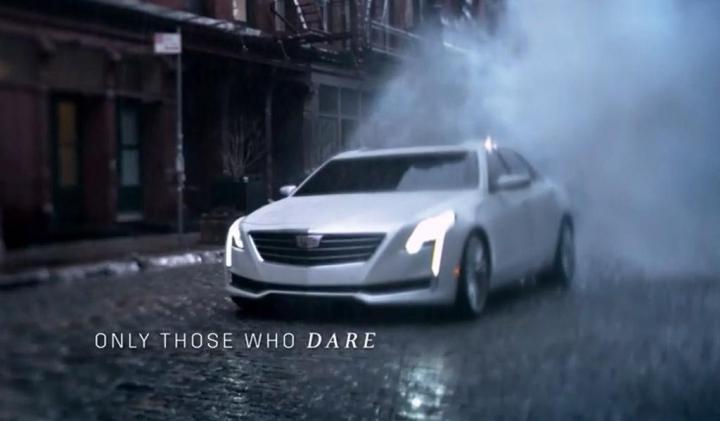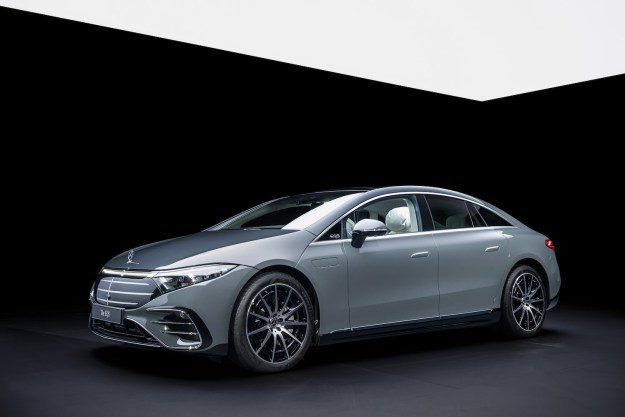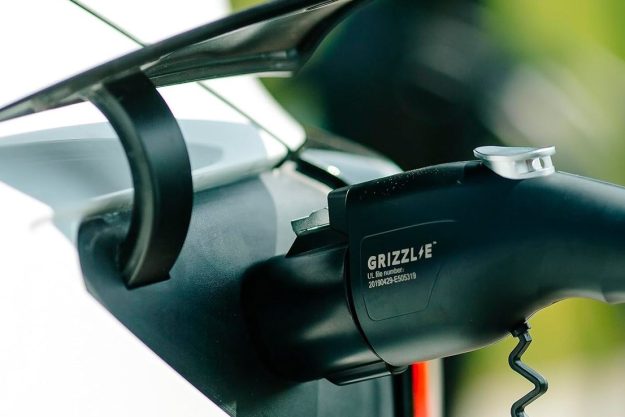
Called, “The Daring: No Regrets,” the ad was one of three Cadillac aired during the Oscars as part of a new campaign that is based, of all things, around quotes from President Theodore Roosevelt’s 1910 speech “Citizenship in a Republic.”
The CT6 itself is only seen briefly, and not quite in focus. It features similar styling to the smaller ATS and CTS sedans, with crisply folded lines and a big broad grille.
The most distinguishing feature seen is this brief glance is a new version of the LED jowls first seen on the CTS, which should give the CT6 a unique lighting signature at night.
What’s missing are any significant references to recent Cadillac concepts like the Elmiraj. Compared to that stunner, the CT6 appears rather subdued.
Cadillac will reveal the car in full at the 2015 New York Auto Show in April. When it goes on sale, the CT6 will compete against prestigious luxury cars like the German trinity of Audi A8, BMW 7 Series, and Mercedes-Benz S-Class, as well as the Jaguar XJ and Lexus LS.
To do that, Cadillac previously said it will make the CT6 the “lightest and most agile” in its class. It will probably have the most tech of any Cadillac to date as well.
While a conventional V8 powertrain seems likely, the CT6 may also be offered as a plug-in hybrid, adding good fuel economy to its resumé.
With the New York Auto Show’s April opening fast approaching, expect a few more CT6 teases over the next month.
Editors' Recommendations
- Cadillac’s 2020 CT4 small sedan starts at $33,990, sporty V model tops $40,000
- Cadillac’s new 2020 CT5 sedan lets you Super Cruise across America


